If you’re selling, leasing or registering property, chances are you’ll need a lease plan to move the process forward. A lease plan is a scaled drawing that defines the exact boundaries and layout of a property. It is a legal requirement for leases over seven years, leasehold sales and many property registrations with the UK Land Registry.
In this guide, we explain what a lease plan is, why it matters and the key situations where it’s required. Just as importantly, we’ll show you how to get one prepared quickly and correctly. At AA Drafting Solutions, we create Land Registry–compliant lease plans that are accurate, accepted first time, and delivered fast. Whether you’re a homeowner, landlord, solicitor or developer, we provide a smooth, professional service that helps you avoid delays and disputes.
Understanding Lease Plans: The Basics
A lease plan is essential for registration with the UK Land Registry and is mandatory for leases lasting over seven years on both land and property. This type of plan ensures precise, legally recognised property demarcations.
It is useful to distinguish the difference between a lease plan and other property documents like floor plans. While lease plans and floor plans may seem similar, lease plans specifically focus on the property’s legal boundaries and its relation to surrounding areas. Floor plans show the layout and dimensions of the interior of a property, and are used to give potential buyers or renters an accurate representation of a property’s layout.
A lease plan typically includes:
- Scaled floor plans: Accurate representations of a property’s layout.
- Boundary markings: Color-coded to show ownership and access areas.
- Contextual maps: Highlighting the property in relation to its surroundings.
These components ensure compliance with the Land Registration Act of 2002, which sets strict standards for property documentation. Without clear and detailed visuals, properties can face disputes or delays in legal processes.
Why Do You Need a Lease Plan?
A well-crafted lease plan is more than just a regulatory requirement; it has several practical applications. This plan is used to clearly define property boundaries, ensuring all relevant details are included in the lease agreement. Lease plan is especially useful when leasing a property, as it provides clarity for landlords and tenants, minimising potential disputes and ensuring compliance with legal standards.
Legal Requirements
If you’re renting out a flat, selling a leasehold property, or updating a lease, you will need a lease plan that meets land registry guidelines. This ensures the property is correctly registered and complies with legal requirements, helping solicitors and conveyancers complete contracts accurately.
Clarity for Tenants and Buyers
Clear visuals help tenants or buyers understand the specific parts of the property they have rights to. This transparency is especially important in shared buildings, such as flats or commercial spaces, where lease plans are used to define ownership and responsibilities. By clearly marking the boundaries and areas of interest, lease plans ensure there is no confusion about what is owned and what is shared.
Smooth Transactions and Dispute Prevention
A well-prepared lease plan is essential for avoiding delays and misunderstandings in property transactions. By clearly defining the property’s boundaries, shared spaces, and exclusive areas, lease plans ensure all parties have a clear understanding of their rights and responsibilities. This accuracy not only facilitates smooth transactions but also helps prevent future disputes.
Key Features of a Professional Lease Plan
For a lease plan to meet Land Registry standards, certain elements are non-negotiable. At AA Drafting Solutions, we prioritise the following features:
- Accuracy: Measurements and layouts must be precise, reflecting real-world dimensions without errors.
- Compliance: All elements must align with Land Registry requirements, including accurate scales, north indicators, and clear labelling. We also incorporate Ordnance Survey data, where needed, for precise mapping.
- Location Plan: A clear location plan is included to show the property’s position within the surrounding area.
- Timely Delivery: Recognising the importance of these plans in property transactions, we offer delivery within 72 hours and expedited services for urgent needs.

Who Prepares Lease Plans?
While technically anyone can attempt to draft a lease plan, this complex document benefits greatly from professional expertise. Companies like AA Drafting Solutions specialise in crafting accurate and compliant plans, as well as offering additional services such as:
- Conveyance Plans: For property sales and boundary changes.
- Right of Way Documentation: To delineate access routes and easements.
- Deed Variation Plans: When lease amendments affect property boundaries or access.
Collaborating with seasoned professionals minimises errors, ensuring that your plans are approved first time and avoiding costly and time-consuming revisions.
Common Scenarios Requiring Lease Plans
Still wondering what a lease plan is and when it’s needed? Here are several scenarios where lease plans are indispensable:
Subdividing Properties
When a house is converted into multiple flats or units, a lease plan is essential to clearly define the boundaries of each individual unit. It ensures that tenants know the exact limits of their property, including shared spaces such as hallways, staircases, gardens, or parking areas. The lease plan will specify these common areas and outline the rights of each unit’s occupants, preventing any confusion or disputes about ownership or responsibility for shared spaces.
New Developments
For builders constructing multi-unit residential or commercial properties, lease plans are required to provide precise details of each individual unit or space within the development. These plans help clarify boundaries, access points, and the layout of both private and shared areas, which is vital for potential buyers or tenants. Providing an accurate lease plan from the outset streamlines the sales or leasing process, ensuring all parties involved have a clear understanding of the property’s division and layout.
Lease Renewals and Variations
When an existing lease is renewed or modified, a new lease plan may be required to accurately reflect changes to the property or terms of the agreement. This could involve adjusting boundaries, adding new areas, or granting additional rights such as exclusive access to certain spaces. An updated lease plan ensures these changes are clearly documented, preventing misunderstandings and maintaining legal clarity for both the landlord and tenant.
Commercial Leases
For businesses leasing spaces in shared commercial buildings, lease plans are crucial in defining not only the tenant’s leased area but also any communal spaces like parking lots, elevators, lobbies, or entrances. A well-detailed lease plan ensures all parties understand their rights and responsibilities regarding shared areas, helping to avoid conflicts over space usage, maintenance, and access.
Landlord-Tenant Agreements
A clear, accurate lease plan helps landlords and tenants avoid disputes by specifying the exact areas covered by the lease agreement. By outlining the boundaries of the leased space, including common areas and any exclusive rights granted to the tenant, both parties have a detailed reference to resolve any issues related to property usage, maintenance, or boundary disputes during the lease term. This clarity is especially vital for long-term agreements where misunderstandings could lead to costly legal disputes.
Why Choose AA Drafting Solutions?
Selecting the right provider for your lease plan can significantly impact the process’s efficiency and outcome. Here’s why AA Drafting Solutions is a trusted name:
In-House Expertise
All plans are produced internally, ensuring quality control and consistency.
Strong Industry Connections
Long-standing relationships with solicitors, conveyancers, and estate agents underscore their reliability and expertise.
Customer-Centric Approach
From flexible delivery timelines to tailored solutions, their service prioritises customer needs. With a commitment to accuracy and compliance, clients can rest assured their documents will meet all legal standards.
Advanced Tools and Techniques
Using state-of-the-art software, their team creates highly detailed and precise plans, setting them apart from less specialised providers.

Steps to Obtain a Lease Plan
When working with AA Drafting Solutions, the process is streamlined for your convenience:
- Initial Consultation
Share property details and specific requirements, ensuring the lease plan is tailored to your needs. - On-Site Survey
A professional team visits the site to measure and assess the property, gathering accurate data. - Plan Creation
Leveraging advanced drafting software, they create a compliant and detailed lease plan that meets Land Registry standards. - Approval and Submission
Once finalised and approved, the lease plan is ready for submission to solicitors, conveyancers, or the Land Registry.
This efficient process ensures clients receive their lease plans quickly without compromising on quality or compliance.
The Cost of Not Having a Lease Plan
Failing to provide a proper lease plan can lead to several complications, including:
- Transaction Delays: Without a lease plan, solicitors may be unable to proceed with registration or contract drafting.
- Legal Disputes: Ambiguities in property boundaries or access rights can result in costly conflicts.
- Non-Compliance Penalties: Failing to comply with Land Registry standards can result in rejected applications or fines.
Investing in a professional lease plan saves time, money, and potential legal troubles in the long run.
Final Thoughts
Understanding what a lease plan is goes beyond technical definitions—it’s about ensuring seamless property transactions and compliance with legal standards. Whether you’re a landlord, tenant, or developer, a reliable lease plan provides clarity, protects your interests, and streamlines processes.
For fast, professional, and affordable lease plan services, AA Drafting Solutions is the partner you can trust. Their expertise ensures you’ll have a compliant, accurate document ready when you need it.
To get started or learn more, visit AA Drafting Solutions.

Contact
Office Address
Opening Hours
Fri — 9am – 5pm
Sat — 9am – 2pm
Sun — Closed



